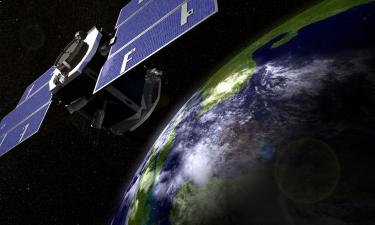Two new moons of Saturn are discovered
The Cassini-Huygens space probe discovered two new moons around Saturn, which could be the smallest ever spotted around the ringed planet, NASA officials said Tuesday. The moons -- measuring three and four kilometers (about two miles) in diameter -- are located 194,000 and 211,000 kilometers (120,500 and 131,000 miles), respectively, from Saturn. They have been temporarily named S/2004 S1 and S/2004 S2. "One of our major objectives in returning to Saturn was to survey the entire system for new bodies," said Carolyn Porco, imaging team leader at the Boulder, Colorado-based Space Science Institute, publishes News Factor. "We can now add the confirmation of two new moons, unnoticed around Saturn for billions of years, until now," she said. The moons were identified by Sebastien Charnoz of France, a planetary dynamics specialist, along with Andre Brahic of the University of Paris, who was part of the imaging team, NASA said. According to SFGate, as yet unnamed, the moons bring to 33 the number of known Saturnian satellites -- and scientists expect to find many more, said Torrence V. Johnson of the imaging team at the NASA Jet Propulsion Laboratory in Pasadena. To Johnson, the discovery is a surprise because he and his colleagues had expected to find such tiny moons close to Saturn's outermost rings, whose millions of brilliantly sunlit particles of ice are in effect moons in themselves. But the two newfound moons are orbiting the giant ringed planet in a region much farther out -- between two of Saturn's much larger well-known moons, Mimas and Enceladus, both discovered in 1789 and each some 250 miles in diameter. USATODAY consider the question and mention that the newfound objects circle Saturn between the orbits of the moons Mimas and Enceladus. Scientists expected small moons might roam in gaps in the rings, but they were surprised to find any between two major moons. Small comets should have hit them by now and broken them to bits, models suggest. The moons' presence might therefore help astronomers put limits on the number of comets in the outer solar system. Moons surrounding the giant planets generally are not found where they originally formed because gravitational forces from the planet can cause them to drift from their original locations, astronomers explained. In drifting, they may sweep through locations where other moons disturb them, making their orbits eccentric or inclined relative to the planet's equator. One of the new moons might have undergone such an evolution, astronomers said. More moons may be found, researchers said. And Cassini may get up-close looks at the two it just discovered. "We are at this very moment looking to see what the best times are for retargeting," said Carolyn Porco, imaging team leader at the Space Science Institute in Boulder, Colo. "Hopefully, we haven't seen the last of them." The moons were detected by noting their movement over time in relation to Saturn and to background stars. Jupiter, being the closest large planet and easiest to study, has five dozen known moons. There are 21 Uranian moons seen so far. Neptune has 11 and Mars has two. Earth has just one. And Pluto also has a moon, Charon.
Read earlier news stories by PRAVDA.Ru
Subscribe to Pravda.Ru Telegram channel, Facebook, RSS!




